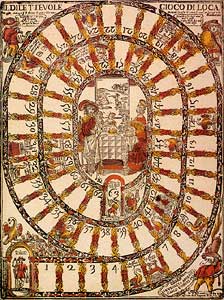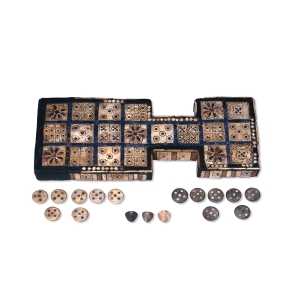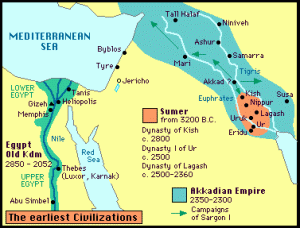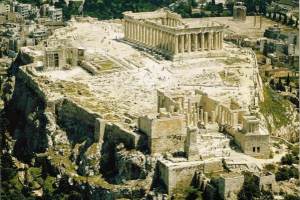Posts Tagged ‘Board games history’
Who is Mr Monopoly and What are the real stories around the Monopoly board game?
Monopoly is considered, the father of all modern board games. Its popularity doesn’t know borders or language barriers and from its firsts years of life, it became the favourite board game of kids and parents.
There are so many stories and incredible facts around Monopoly that would be impossible talk about history of board games without making any reference to these events. Friends playing Monopoly in the most unusual ways and people attempting incredible records.
Here you can find some real stories and incredible facts that surround the Monopoly board game:
Read the rest of this entry »
The Tafl is an ancient Viking board game and also one of the oldest board games ever invented.
Talfl board game is the Nordic answer to the game of chess, but its board is larger and the high number of odds leads to a high number of variants to be considered at every move; this turns this board game into into a true exercise of skill and strategy.
References to Tafl and other board games abound in many famous Viking Sagas, however some of the rules are still uncertain.
You can find here a modern reconstruction of the rules of this ancient board game.
For sure we know that Tafl was a board game for two players very popular among Viking, Norse, Celtics and other Northern Europe populations, and we also know that the game consists of:
a game board of 19 x 19 ;
24 white pawn pieces
1 white King piece
48 black pieces.
Tafl it’s a strategy board game; a wargame based on attack and defence: like in the game of chess, there are whites and blacks pieces; whites comes with a king while blacks do not. The goal for whites is to liberate their king frome black threat making him arrive at one edge of the board, while for blacks, the aim is to capture the enemy king. With the exception of the king the other pieces are all the equivalent of a pawn in chess and can move how many boxes they want until you meet an obstacle and it is forbidden to move diagonally (like the rook in chess). As regards the positions of the king occupies the middle box and is surrounded by his pawns instead blacks are positioned at the edge of the board. To “eat”, a pawn must close between two pieces while the king must be closed in four pieces.
The first evidence of the existence of this Viking board game is given to us from the discovery of a Roman tomb dated 400 AD in the Danish island of Wimose: inside the tomb, researchers fount a little fragment of the Tafl board. In an English manuscript of the tenth century (more correctly dated to the reign of King Athelstan of Wessex, 925-940) is instead shown a table with the initial layout of all pieces and some brief rules for the game.
The full name of this board game is Hnefatafl which probably means “the king’s board”: The term “Tafl” comes from the Latin “tabula” which stands for board. Read the rest of this entry »
 Greek and Roman games are one of the little known aspects of these ancient societies.
Greek and Roman games are one of the little known aspects of these ancient societies.
In Hellenistic and Roman culture skill games were a recreational activity both for children and adults.
Since prehistoric times is possible to recognize the so-called ancestors of games and toys among the archeological finds and in the works of Hellenic and Romans artists and poets:
We know for sure that in the fifth century BC, Crater, an Athenian playwright, wrote a play dedicated to skill games.
In ancient Rome writer Suetonius wrote two different books one on Greek kids games, and the other on the Romans ones: unfortunately all these works got lost and we know only a few certain things about ancient Greek and Roman skill games.
A lot of references are traceable in the works of philosophers, poets, playwrights who, helped us to understand that in every ancient game there was a deep educational theory to help and support kids development through the use of their skills.
In the ancient Roman world the expression “nuces relinquere” (leave the nuts), meant leaving childhood and becoming adult, because nuts were used by kids to play one of the most popular skill game in ancient Rome . The nuts were used like balls and thrown to to smash other nuts, just like in the modern bowling game.
Read the rest of this entry »
Scrabble is probably one of the most famous board games ever invented with over 100 million sets sold in all the world.
Today everyone knows Scrabble and have played this linguistic clever game once at least, but few people know the real story of its invention.
In fact not everyone knows that Scrabble before becoming a famous board game was first a commercial flop.
Year 1931; The city of Poughkeepsie, upstate New York, was facing the worst years of the great depression. This was the situation when an architect, Alfred Mosher Butts, lost his job and decided to devote himself to his biggest passion: board games and words. Soon Butts decided to invent a board game to play with words and improve the linguistic skills of the player. Towards the end of 1931 Butts had already developed the basic idea of the board game, which was initially called Lexico. This game was initially played without the board and players calculated their scores according to the length of the words formed. There were also reward points for words formed with less frequent letters (B, F, H, M, P, V, W, Y) and bonus points even higher for those containing unusual letters (J, K, Q, X, Z).
In 1933, Butts tied to register the trademark of is new board game but his request was denied. Similarly, when he proposed the new board game to the two top gaming company In United States, (Parker Brothers and Milton Bradley), he received only a polite refuse.
Read the rest of this entry »
Gomoku (五目並べ) is a Japanese traditional logic board game, related with the game of Gobang (which uses the same board and pieces), and it’s also know in English countries as Five in a Row.
The rules of the game of Gomoku are in fact different and much simpler than the Gobang game and for this reason it’s a board game played mainly by children. But despite its simples rulres Gomoku is a strategy and logic board game more complex and difficult than Tic Tac Toe (also called Nine Mens Morris) and the modern Connect Four. Read the rest of this entry »
Ridley Scott announced his commitment into a new movie based on the Monopoly board game.
The script is not ready yet, so we can’t give you an overview of the plot, but we can tell you about the real story behind the invention of Monopoly.
A story of money, success, plagiarism and legal fights revealed to the pubblic only in the eighties after the so called Monopolygate: Read the rest of this entry »
- In: board games | Curiosities | Educational | History
- Leave a Comment

Egyptian gooses

Ancient Italian goose game
In 1640, a new board game called “Game of the goose” appeared for the first time.
The game of the goose was published in Venice (Italy) by Carlo Coriandoli. The first stamp of this game represents a family sitting at the table covered with food off all kind with a big roasted goose in the centre.
The name “game of the goose” probably derives from this first stamp, although many studious declare that the origin of the name comes from the particular player’s habit of using the won money to buy a big goose.
Certainly the game of the goose has ancient origins, that can be tracked down in many documents recovered in ancient Egyptian tombs.
The goose game represents in a board game the eternal struggle of good vs evil: the goose must defeat evil overcoming all the obstacles of the game.
The game board of the goose game is composed by 90 coded boxes (in the ancient one they were only 63) arranged in a spiral. The aim of the goose game is to roll the two dices and get from square 1 to square 90 before the other player. Yo do this we have to be lucky enough to avid the penalty boxes.
The goose game is very simple and it doesn’t request particular abilities, the player wins with the fortune of the dices.
The game of the goose spread quickly in all European countries and was really popular especially among literate and intellectuals. After several years the basic model of the game was reinvented and evolved in many different versions called with many different names during our history: the “owl game”, the “war game”, the “travel game”, the “train game”.
- In: board games | Curiosities | Educational | History | Role Games
- 3 Comments
 In 1920 British archaeologist Sir Charles Leonard Woolley, during some excavations in the Royal Cemetery of Ur in Mesopotamia, found the rests of a Royal tomb full of ancient and beautiful finds.
In 1920 British archaeologist Sir Charles Leonard Woolley, during some excavations in the Royal Cemetery of Ur in Mesopotamia, found the rests of a Royal tomb full of ancient and beautiful finds.
In this mausoleum Wodley discovered several incredibly well conserved exemplars of an ancient board game.
This artefact was called the Royal Game of Ur and was made more than 2600 years before Christ:
The Royal Game of Ur is one of the oldest board game in history and is composed by two decorated boards and two different sets of seven pieces each.
This incredible piece of game’s history is part of the British Museum’s Mesopotamia collection and was played with pyramidal dices.
Like the Faraons’ board game named Senet, the Royal Game of Ur was a race board game in which the players had to reach the other end of the board with their pieces.
This game had a mistyc power for Ancient Sumers; they believed that the dead person must play The Royal Game of Ur vs a spiritual entity in order to acess the reign of death.
This ancient Sumerian game can be played on the British Museum’s Mesopotamia website.






 In ancient Greece,
In ancient Greece,  Theseus (the player) must overcome different stages in a labyrinth scenario to fight and defeat the final Minotaur monster.
Theseus (the player) must overcome different stages in a labyrinth scenario to fight and defeat the final Minotaur monster.
Gaming comments